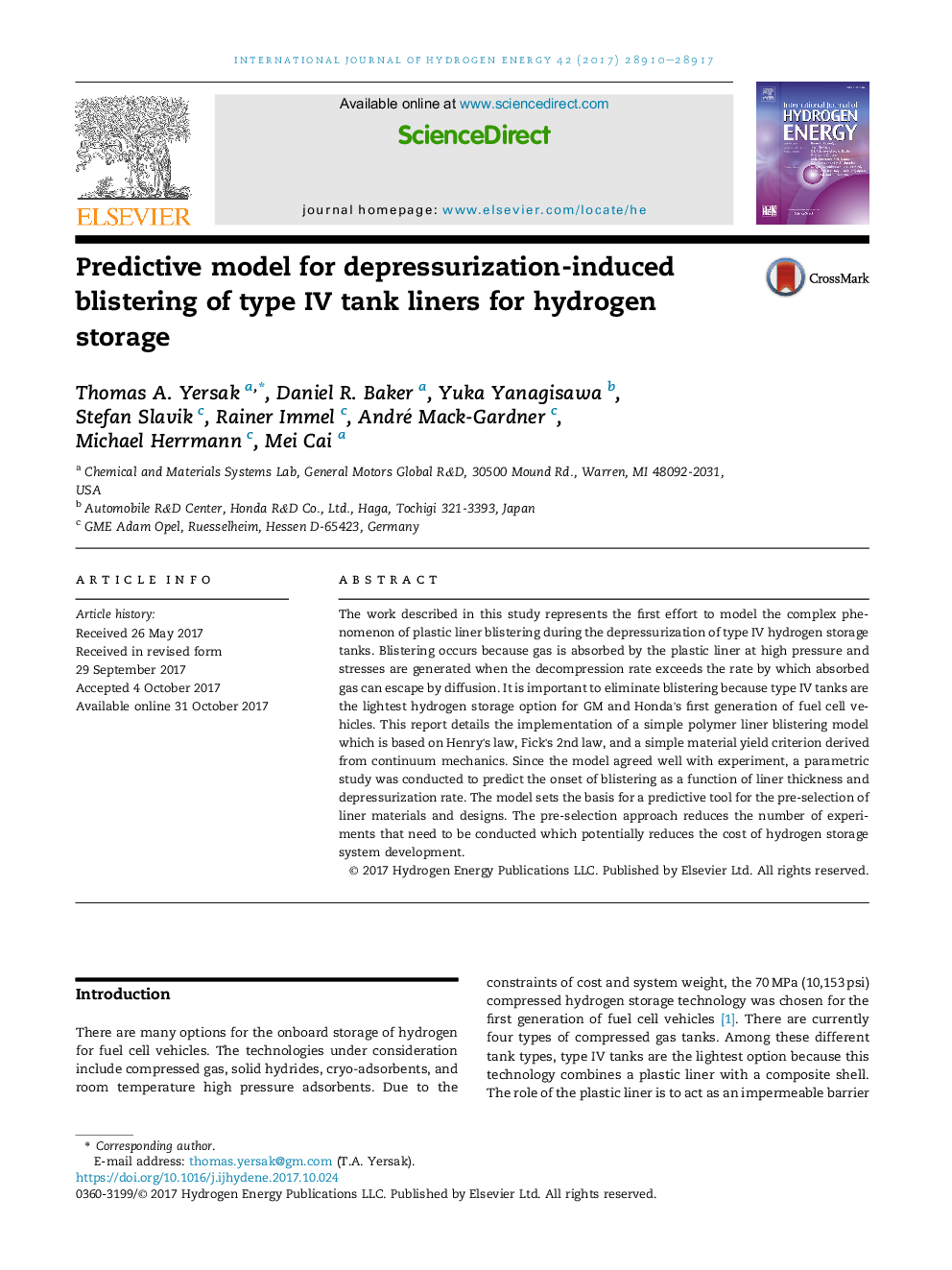| Article ID | Journal | Published Year | Pages | File Type |
|---|---|---|---|---|
| 7709319 | International Journal of Hydrogen Energy | 2017 | 8 Pages |
Abstract
The work described in this study represents the first effort to model the complex phenomenon of plastic liner blistering during the depressurization of type IV hydrogen storage tanks. Blistering occurs because gas is absorbed by the plastic liner at high pressure and stresses are generated when the decompression rate exceeds the rate by which absorbed gas can escape by diffusion. It is important to eliminate blistering because type IV tanks are the lightest hydrogen storage option for GM and Honda's first generation of fuel cell vehicles. This report details the implementation of a simple polymer liner blistering model which is based on Henry's law, Fick's 2nd law, and a simple material yield criterion derived from continuum mechanics. Since the model agreed well with experiment, a parametric study was conducted to predict the onset of blistering as a function of liner thickness and depressurization rate. The model sets the basis for a predictive tool for the pre-selection of liner materials and designs. The pre-selection approach reduces the number of experiments that need to be conducted which potentially reduces the cost of hydrogen storage system development.
Related Topics
Physical Sciences and Engineering
Chemistry
Electrochemistry
Authors
Thomas A. Yersak, Daniel R. Baker, Yuka Yanagisawa, Stefan Slavik, Rainer Immel, André Mack-Gardner, Michael Herrmann, Mei Cai,
